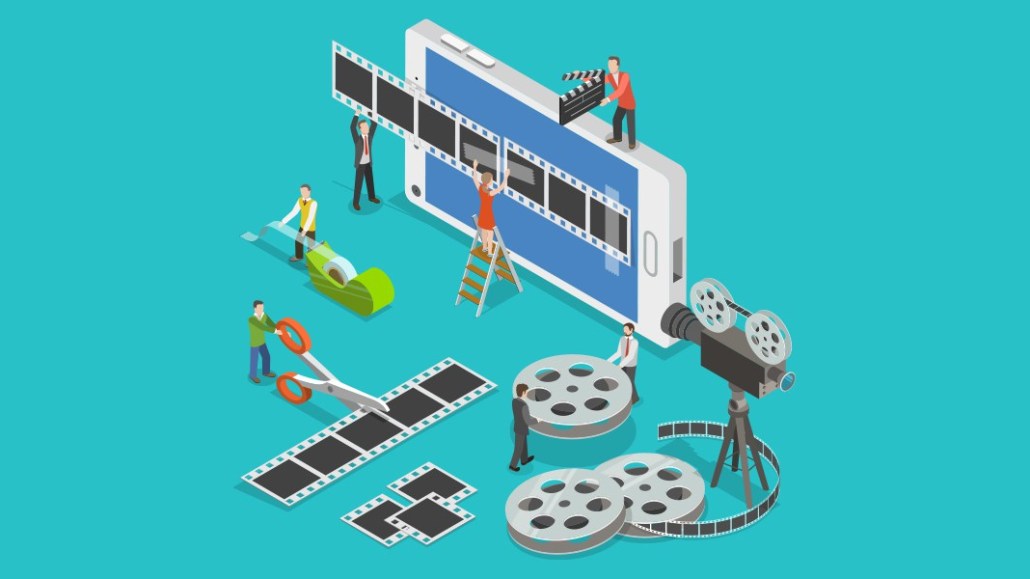Save 50% on a 3-month Digiday+ membership. Ends Dec 5.
Publishers that mastered fleeting news feed video views try to master appointment viewing

In the autumn of 2015, when CNN launched Great Big Story as its distributed media play, the Facebook news feed was where the action was. New-style video outfits like NowThis and BuzzFeed’s Tasty were racking up astounding video counts by catering to the feed.
Now, publishers have adjusted their strategies, with the goal less a fleeting impression in the feed but rather getting viewers to keep coming back. For Great Big Story, that meant making sure each episode followed a predictable narrative arc and was consistent in tone, allowing audiences to quickly learn what to expect. Last year, with a crime investigative series called “Beneath the Skin,” CNN released all the episodes at once on CNNgo, CNN.com and YouTube, seeing that serialized content gets more consumption that way.
“The internet doesn’t lend itself to habit, so one of the challenges for digital native brands is to create it,” said Chris Berend, svp of digital video at CNN.
Call it the pivot to appointment viewing. Many publishers see their future in video, but one reason video won’t become a big business for a lot of them is the difficulty in not just grabbing people’s attention for a few seconds in their social feeds, but creating TV-like content that engenders loyalty.
There are more places than ever for video to be distributed. And publishers are flocking to those OTT platforms, according to Digiday Research, which found that 81 percent of media industry execs are looking to increase OTT content.
That opportunity can be seen as a blessing as well as a curse. Almost all shows are available on demand now, so everyone watches video on their own schedule, said Bernard Gershon, president of GershonMedia. “It’s the ‘pivot to build up my own traffic,’ and how do I get the consumer viewer to look at my content more than once?” he said.
For a new series, repeat viewing can be an important precursor to advertiser support. “Repeat visitors is a really good indication of healthy content,” said Barry Lowenthal, president of The Media Kitchen. “That might be justification for taking the leap of faith and paying more for it.”
Ad position: web_incontent_pos1
Other obstacles come down to quality and promotion. Quality video that audiences deem worth their while is hard and expensive to do, and most digital publishers have optimized to short news feed videos on Facebook. But now Facebook and other buyers of shows like YouTube Red and Go90 are moving in the direction of longer-form content.
“There’s a big learning curve; it’s a very different skill set,” said Alan Wolk, TV industry analyst for TVRev. “A lot of [publishers] will run out of money. The YouTube gestalt doesn’t work in 30 minutes.”
“The problem with all these publishers is, they wonder why they can’t get a must-see TV [show] or repeat viewing because they’re not building franchises or brands,” said Complex Media CEO Rich Antoniello. “And most of them are producing content that’s 35, 40 seconds. If you just chased the optics of a billion views and most of those views were happening on Facebook, now you’re in big trouble.”
A few years ago, Complex decided to program itself like a linear cable channel and focus on creating long-form content that no one else had, Antoniello said. Today, Complex has 33 weekly and daily shows that average 19 minutes long and come out at appointed times. A few like “Hot Ones,” which combines interviews with spicy chicken wings; and “Sneaker Shopping,” which is about shoe shopping with celebrities, each have a library of more than 100 episodes and more than 300 million views across YouTube and Complex’s own properties. Outside those, Complex is selective, focusing on platforms it knows its young male target audience uses.
“It’s easier to talk to an advertiser not just when you have big view counts but multiple platforms that are paying for your content and not just have a card at the beginning of a video, but I can actually run a commercial,” Antoniello said. “It can’t just be hands and pans and say that’s equal to a television show.”
Ad position: web_incontent_pos2
Then, there’s the discoverability problem. Publishers can pay to promote their shows on OTT platforms, so there’s the opportunity to get noticed, but there’s also much more noise to compete with. Netflix alone is eyeing funding 700 new movies and shows this year, compared to the 15 or 20 new shows a typical network might produce in a year.
“No one’s created the EPG [electronic program guide] for electronic content. There’s not a way for me to see everything that’s out there,” Gershon said. “The digital natives, their overall expenses are lower. They could get to modest scale with high-quality content, but they’re not going to be huge businesses.”
For more on the modernization of video and entertainment, subscribe to our weekly video briefing email.
More in Future of TV

Future of TV Briefing: The streaming ad upfront trends, programmatic priorities revealed in Q3 2025 earnings reports
This week’s Future of TV Briefing looks at what TV and streaming companies’ latest quarterly earnings report indicate about the state of the streaming ad market.

Future of TV Briefing: The creator economy needs a new currency for brand deals
This week’s Future of TV Briefing looks at why paying creators based on reach misses the mark and what IAB is doing to clear up the creator-brand currency situation.

Future of TV Briefing: WTF is IAB Tech Lab’s device attestation tactic to combat CTV ad fraud?
This week’s Future of TV Briefing breaks down the CTV ad industry’s new tool for fighting device spoofing.
Ad position: web_bfu





